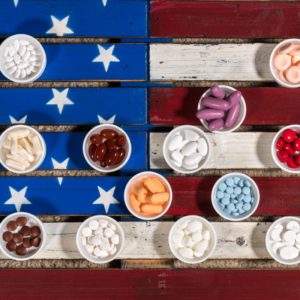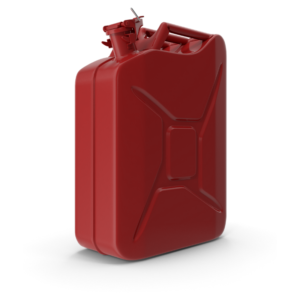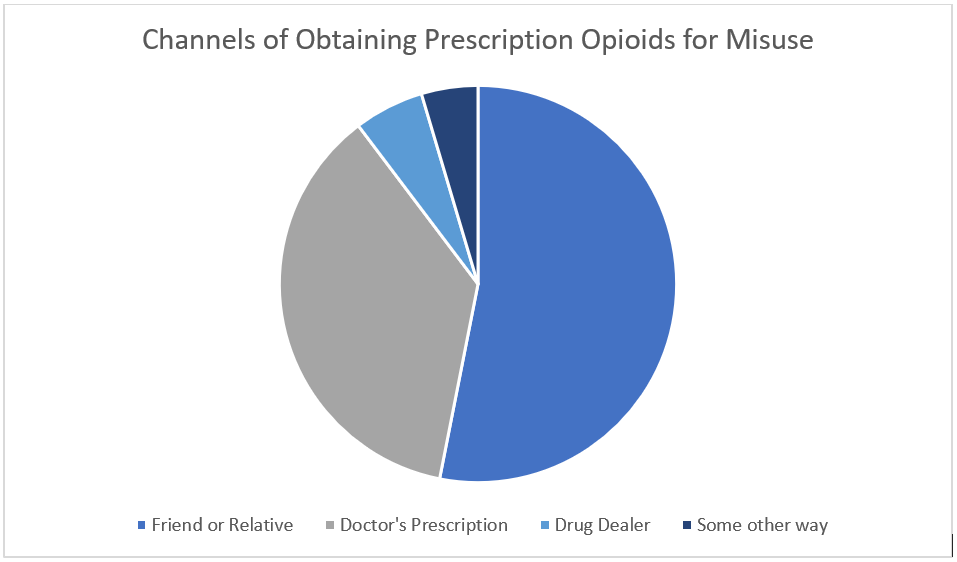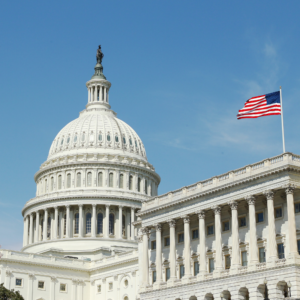by Gabriel Levitt, President, PharmacyChecker.com and Prescription Justice | Oct 26, 2018 | Drug Prices
 Yesterday, with great public relations fanfare, a new report from President Trump’s HHS was released showing that drug prices in other countries are often half the price they are in America. Who would have known? Well, for starters, the millions of Americans who are forced to shop internationally in order to afford their meds. Prices in other countries are actually much less than half for many drugs, but this report only looked at drugs in Medicare Part B, ones administered in a clinical setting by a healthcare provider – not picked up at the pharmacy.
Yesterday, with great public relations fanfare, a new report from President Trump’s HHS was released showing that drug prices in other countries are often half the price they are in America. Who would have known? Well, for starters, the millions of Americans who are forced to shop internationally in order to afford their meds. Prices in other countries are actually much less than half for many drugs, but this report only looked at drugs in Medicare Part B, ones administered in a clinical setting by a healthcare provider – not picked up at the pharmacy.
Trump’s rhetoric on drug prices is one of the few unifying issues in our deeply-divided country. Trump has stated on several occasions that the “drug companies are getting away with murder.” Murder. Now, while his administration hasn’t really done much at all on drug prices, the latest report puts it out there loud and clear: drug prices are insanely lower in other rich countries than here in the United States.
(more…)
Tagged with: Alex Azar, Donald Trump, politics
by Dr. Shivam Patel, PharmD, BSPS, RPh, Director of Pharmacy Verification and Information | Oct 26, 2018 | Drug Safety
 Not only is October American Pharmacists Month, a time to recognize pharmacists for the great care they provide to communities, but October 27th is also the Drug Enforcement Agency’s (DEA) National Prescription Drug Take Back Day.
Not only is October American Pharmacists Month, a time to recognize pharmacists for the great care they provide to communities, but October 27th is also the Drug Enforcement Agency’s (DEA) National Prescription Drug Take Back Day.
The day is designed to highlight a program that provides a safe and responsible method for patients to discard prescription medications from their homes and learn more about the risk of abuse with controlled prescription medications. The DEA website has a collection site locator, where Americans can find the exact location to discard their medications safely. The website also has a Substance Abuse and Mental Health Service (SAMHSA) Behavioral Health Treatment Services locator, it’s confidential and helps individuals find resources in their area.
(more…)
Tagged with: controlled drugs, National Prescription Drug Take Back Day, opioids
by Gabriel Levitt, President, PharmacyChecker.com and Prescription Justice | Oct 18, 2018 | Drug Prices
 As announced by HHS Secretary Alex Azar, the Trump administration is planning to force drug companies to include prices in their advertising. That means that, along with the long list of drug side effects that you hear during a TV ad, you’ll see the list prices. That list price is referred to as the wholesale acquisition cost, which is around the cash price you’d pay without insurance. Prices would have to be included in all ads for drugs covered by Medicare and Medicaid (i.e. pretty much all drugs).
As announced by HHS Secretary Alex Azar, the Trump administration is planning to force drug companies to include prices in their advertising. That means that, along with the long list of drug side effects that you hear during a TV ad, you’ll see the list prices. That list price is referred to as the wholesale acquisition cost, which is around the cash price you’d pay without insurance. Prices would have to be included in all ads for drugs covered by Medicare and Medicaid (i.e. pretty much all drugs).
I don’t particularly love this idea, but it is better than nothing.
The goal of this policy is to control drug prices by making them more transparent. Sound unlikely? It has a noble free market, pro-consumer ring to it, which I kind of like. It will be fun to see how this plays out, but it’s a minuscule policy move that won’t bring the kind of drug price relief that Americans want and need. In the proposed rule, Azar, or whichever of his staff wrote it, is all high and mighty about transparency and market efficiency:
“Markets operate more efficiently when consumers have relevant information about a product, including its price, as well as alternative products and their prices, before making an informed decision whether to buy that product or, instead, a competing one.”
At PharmacyChecker, we know a lot about the importance of drug price transparency. That happens to be one of the things we’re best at (along with verifying pharmacy practice standards). Our recognized forte is international pharmacy drug price transparency.
Here’s a scenario for you:
In this future world of Azarian drug price transparency, Jorge from Brooklyn will be watching the baseball game (maybe the Yankees in the World Series next year), and he’ll see an ad by Merck for the drug, Januvia. Jorge has just learned he has Type 2 diabetes and has a prescription. He’ll hear that Januvia can help lower his blood sugar, which is good. Then, he’ll hear that the side effects could include joint pain, a skin reaction requiring treatment in a hospital, and even death from pancreatitis. He gets that all these ads have to list those side effects.
Then he hears: it’s $550 for a one-month supply; but, wait, it will likely cost much less with insurance! That doesn’t exactly help. Jorge is one of 30 million uninsured Americans, and $550 is more than he can afford after paying his rent, groceries, gas bill, his daughter’s ballet classes, and his son’s asthma inhaler. Yes, he’ll hear there are Januvia patient assistance programs that might be able to help. Let’s hope so…because people often don’t qualify.
There’s no generic competition for this drug in Brooklyn. Unlike generic drugs, you can’t pharmacy hop for the best price or find a significantly lower U.S. price on the web. So what good is that transparency other than a minor slap on the hand to Big Pharma?
45 million Americans didn’t fill a script in 2016 because they faced similar situations to Jorge.
But there’s hope! When my fellow Americans visit www.pharmacychecker.com, they are blown away that the price of a drug is almost nine times higher in the U.S. than in Canada – and, yes, I mean Canada (not India or Turkey, where drug prices are even lower, and for the same drug).
On our website, Jorge learns that brand-name Januvia is $270 for a three-month supply if he orders it from Canada. Now that’s Drug Price Transparency! It’s a massive punch to the Big Pharma gut.
|
Januvia Prices in the U.S. vs. Canada
|
| Drug |
U.S. Price |
Canadian Online Pharmacy Price |
Savings |
| Januvia 100 mg |
$1,593.90 |
$269.94 |
83% |
Canadian pharmacy prices among verified international online pharmacies in the PharmacyChecker Verification Program are ones he can afford. If he cannot, then those same online pharmacies may also refer orders to pharmacies outside of Canada, which may have even lower prices.
Azar’s proposal shows just how vulnerable Americans are
To the credit of Azar’s proposed rule, it at least identifies how incredibly vulnerable Americans are to drug prices.
- Uninsured paying cash prices
- Insured finding that PBM formularies don’t cover all drugs
- Insured finding they must pay co-insurance of 30-60% (not just copays) on really expensive drugs (in the many thousands per month)
These coverage gaps affect tens of millions of people each year, which is why we have a crisis. Making drug companies note the price in TV ads while leaving the patient powerless to do anything stinks.
Interestingly, one drug company, Johnson & Johnson, warns that this is a bad idea because people might end up not taking their prescribed medications. The Onion couldn’t do better than this. It’s not The Onion, though. It’s Bloomberg: J&J Says Putting Drug Prices in Ads May Scare Away Patients.
From the mouth of Big Pharma…
Tagged with: Alex Azar, Drug advertising, Januvia, politics, transparency
by Gabriel Levitt, President, PharmacyChecker.com and Prescription Justice | Oct 12, 2018 | Drug Safety
 The role of the Internet as a channel to obtain and misuse prescription narcotics is tiny.
The role of the Internet as a channel to obtain and misuse prescription narcotics is tiny.
A report published by the Substance Abuse and Mental Health Services Administration (SAMHSA), a division of the U.S. Centers for Disease Control and Prevention, blamed the Internet for 0.1% (one tenth of 1%) of all narcotic abuse. That data was from 2015. The latest such report, which is called the National Survey on Drug Use and Health has new data from 2017 that doesn’t even have a category for the Internet.
It’s hard to tell if the new number is lower or higher than 0.1%. While 0.1% appears to be statistically insignificant, people have died buying narcotic prescription drugs online and all channels of abuse need to be addressed.
Drug Companies Want to Hide Lower Drug Prices from Americans
On the other hand, drug companies are lobbying Congress to crackdown on Internet companies about opioids, but what they really want is for Americans to stop using the Internet to access lower prescription drug prices from Canada and other countries. In fact, drug giant Eli Lilly wants to censor the Internet by removing Canadian online pharmacies from Google search results in the U.S. Let’s address opioid sales online with a scalpel, not a sledge hammer. More importantly, let’s put resources into treatment and use law enforcement where it’s most needed.
According to the government’s survey, of the 11.1 million people who misused prescription opioids, here’s how they obtained them: 53.1% from a friend or relative; 36.6% from a doctor’s prescription; 5.7% from a drug dealer; and 4.6% some other way.

I don’t know why SAMHSA removed the Internet as a category but believe there are two possible answers:
One, the internet channel was statistically insignificant.
Two, the incredibly small percentage, 0.1%, did not fit the agenda of the pharmaceutical industry to blame the Internet for illegally obtained prescription narcotics.
The data showing that only 0.1% of Americans who abuse opioids get them online doesn’t justify the major crackdown on the Internet desired by the pharmaceutical industry.
Yes, drug companies can lobby Congress and federal agencies to have questions removed and added to research on matters that affect them. The FDA has never reported a person seriously sickened or killed by buying medicine internationally from an online pharmacy that requires a prescription. The safest international online pharmacies don’t sell opioid medicine or any controlled drugs.
What does the category “some other way” account for according to SAMHSA?
“Some other way includes write-in responses not already listed in this table or responses with insufficient information that could allow them to be placed in another category.”
That means they didn’t ask about the Internet, but people may have written it in. I’ll update this post when I find out more about it.
Consumer Advocacy
As drug companies continue to pressure Congress about stopping personal drug importation by censoring the Internet, it’s important for consumer advocates to stay on top of this data. As I wrote last week, if you look closely, the law, ironically, defends personal drug importation – even if it’s technically illegal.
Let’s beat the opioid crisis without stopping people from safe personal drug importation of non-opioid, non-controlled products.
Tagged with: Online Pharmacy, opioids
by Gabriel Levitt, President, PharmacyChecker.com and Prescription Justice | Oct 5, 2018 | Drug Importation
As reported in Kaiser Health News, the personal drug importation cause had a little victory recently. A bill focused on the opioid crisis, H.R. 6, slated for final passage, includes language that is protective of individuals who import medicines for their own use, even illegally.
While its focus is curbing opioid abuse, H.R. 6 reforms drug importation laws that have nothing to do with opioids but empowers the FDA to stop imports of prescription drugs considered by the FDA to be misbranded (which can mean prescription drugs that have a Canadian not U.S. label). Those reforms will make it more difficult on people and business engaged in illegal, wholesale prescription drug importation. An earlier version of H.R. 6, from the House, included language that exempted imports for personal use. That language was quietly removed in a Senate version, which passed in that chamber. Then, apparently there was some protest among certain members of Congress and the language was put back in during conference – and is now in the final law.
Now I’m getting a lot of questions about the law and personal drug importation. There are several parts of law, regulation and policy very favorable to personal (but not wholesale) importation, which have yet to be compiled and addressed in one article. I endeavor to do that here. The gist is that Congress doesn’t want the FDA to unnecessarily stop Americans from buying medication from Canada and many other countries – even if it’s technically illegal. The position of Congress is clear in law if you look comprehensively and closely.
(more…)Tagged with: Congress, politics
by Gabriel Levitt, President, PharmacyChecker.com and Prescription Justice | Sep 28, 2018 | FDA enforcement
 This week, PharmacyChecker added information about Domperidone to our Domperidone drug price comparisons page to better educate people considering ordering this medicine. The product is also sold under the name “Domperidone Suspension” as well as the brand name “Motilium.” Exploring this drug and the U.S. Food & Drug Administration’s Expanded Access Program is key when looking at avenues of drug importation that are expressly permitted in the U.S. My aim in this post is to explain how this program works; differences of opinion about medical ethics related to Domperidone and other medications that may not be FDA-approved but are still of interest to doctors when treating their patients; and how this relates to the subject of personal drug importation overall.
This week, PharmacyChecker added information about Domperidone to our Domperidone drug price comparisons page to better educate people considering ordering this medicine. The product is also sold under the name “Domperidone Suspension” as well as the brand name “Motilium.” Exploring this drug and the U.S. Food & Drug Administration’s Expanded Access Program is key when looking at avenues of drug importation that are expressly permitted in the U.S. My aim in this post is to explain how this program works; differences of opinion about medical ethics related to Domperidone and other medications that may not be FDA-approved but are still of interest to doctors when treating their patients; and how this relates to the subject of personal drug importation overall.
Domperidone Treatment and Regulations in Different Countries
Domperidone is approved for sale in Canada and the United Kingdom, as well as other countries, but not the U.S. Unlike FDA-approved drugs sold in Canada and the UK, the FDA provides patients and their providers with a specific, permitted process to import Domperidone for personal use.
Domperidone is approved for sale in Canada for treating several gastrointestinal conditions; in the UK, it is only approved for the treatment of nausea and vomiting.
Domperidone increases lactation in breastfeeding mothers, but, due to serious potential side effects, it is not approved in any country for this purpose. However, in Australia and other countries, it is prescribed off-label to improve lactation. You can find an excellent discussion with points for and against this here: Off-label Prescribing of Domperidone
Expanded Access Programs
While the FDA has not approved it for sale in the U.S., Americans can access Domperidone under the federal agency’s Expanded Access Program. This program provides a permitted protocol to obtain drugs through an Investigational New Drug application (IND). Only FDA-approved drugs can be distributed in the U.S. INDs offer a path for drug companies who want to transport drugs that are not yet approved in the U.S. across state lines, usually for purposes relating to clinical trials of new drugs.
INDs are used by physicians to apply to the FDA to treat patients with Domperidone. While the FDA has not approved it for sale here, the FDA agrees that Domperidone may benefit people with severe gastrointestinal motility disorders when the potential benefits outweigh the risks.
Domperidone Risks
In 2004, with an import alert on Domperidone, the FDA very strongly came out against use of Domperidone for lactation and does not allow imports for that purpose. The agency also stopped compounding pharmacies from making and dispensing the drug domestically. The FDA states that the drug substantially increases the risk of cardiac problems, which outweigh the benefits (including aiding lactation). Interestingly, as recently as 2015, the Pharmacy Compounding Advisory Committee met with the FDA to try and change the agency’s mind to allow them to compound Domperidone. The request was denied.
Here’s a general overview of the program to obtain Domperidone. Detailed instructions for this process are contained in the FDA’s Domperidone IND Packet.
Domperidone Importation Exceptions
The FDA’s communications about this program are to physicians, patients and pharmacies – but patients cannot act without their providers. Unlike personal drug importation of FDA-approved drugs or foreign versions of FDA-approved drugs, to obtain drugs under the Expanded Access Program requires the participation of U.S. physicians, U.S. pharmacies, and the overseas manufacturers of the drugs.
The FDA has identified one pharmacy, called Dougherty’s Pharmacy, with two locations in Dallas, TX that is permitted to import and distribute Domperidone. It’s not clear why there is only one company involved. The FDA communicates that other pharmacies can apply to distribute Domperidone.
The FDA does not permit physicians and their patients to use the program to import Domperidone for breastfeeding mothers having problems with lactation. Recall, it’s also not approved for that purpose in Canada or the UK – or anywhere. However, in Australia, it’s prescribed off-label for this purpose. Off-label prescribing is when a provider writes a prescription for a patient to treat a condition with a drug that has not been approved by the FDA (in the U.S.) for that condition. Off-label prescribing is both legal and very common in the U.S., although controversial. According to WebMD, 20% of prescriptions are written off-label.
Physicians are allowed to prescribe medication off-label based on their medical judgement. I believe that would include Domperidone. One doctor, Juliet Mavromattes, MD, makes a case for why it would be medically unethical to prescribe Domperidone for lactation in the U.S. – but OK for GI disorders, per FDA’s guidance. Here’s a vehement defense of prescribing Domperidone to improve lactation from a pediatrician in Canada.
Safety When Buying Domperidone Online
If you do choose to buy Domperidone online from another country, be careful who you buy from. There are a lot of websites who will offer to sell this drug without a prescription. Many such sites are dangerous to order from. You can be more certain of obtaining the right medicine, dispensed by a licensed pharmacist, if you stick to ordering Domperidone from an online pharmacy verified through the PharmacyChecker Verification Program.
Prices for Domperidone 10mg range from 16 cents to 49 cents a pill: for 200 pills, that’s $32 vs. $98. The online pharmacies will likely decline to dispense it for lactation from certain countries, including Canada, but may do so from Australia where the drug is prescribed off-label.
FDA’s Path to Safe Personal Drug Importation
As this relates to personal drug importation overall, it’s interesting to note the reasoning the FDA provides for permitting it. Here are some highly relevant excerpts from the FDA’s website:
“The Expanded Access program facilitates availability of investigational drugs (such as Domperidone) to patients with serious diseases or conditions when there is no comparable or satisfactory alternative therapy to diagnose, monitor, or treat the patient’s disease or condition.
“To help facilitate the IND process, FDA has developed this packet, which includes instructions, templates, checklists, a protocol outlining the treatment plan (multi-patient INDs only), and summary of regulatory requirements. As sponsors of an active IND, physicians can prescribe Domperidone to qualifying patients.”
In view of the FDA’s positions here on availability and access, it provides a lot of room to defend lack of access based on affordability. It also shows how the FDA could engage healthcare providers in assisting patients with safe personal drug importation of FDA-approved drugs and foreign versions of FDA-approved drugs. For example, a doctor could fill out a form, similar to the one used to obtain Domperidone, to help a patient import a drug from Canada that the patient can’t afford domestically.
We know that doctors, nurse practitioners, and physician assistants—ones that recommend use of PharmacyChecker-verified online pharmacies—are concerned about the FDA’s actions against personal imports. They would appreciate a more organized pathway to help their patients obtain affordable drugs from Canada and overseas.
Tagged with: Domperidone, Expanded Access Program, imports
 Yesterday, with great public relations fanfare, a new report from President Trump’s HHS was released showing that drug prices in other countries are often half the price they are in America. Who would have known? Well, for starters, the millions of Americans who are forced to shop internationally in order to afford their meds. Prices in other countries are actually much less than half for many drugs, but this report only looked at drugs in Medicare Part B, ones administered in a clinical setting by a healthcare provider – not picked up at the pharmacy.
Yesterday, with great public relations fanfare, a new report from President Trump’s HHS was released showing that drug prices in other countries are often half the price they are in America. Who would have known? Well, for starters, the millions of Americans who are forced to shop internationally in order to afford their meds. Prices in other countries are actually much less than half for many drugs, but this report only looked at drugs in Medicare Part B, ones administered in a clinical setting by a healthcare provider – not picked up at the pharmacy.







